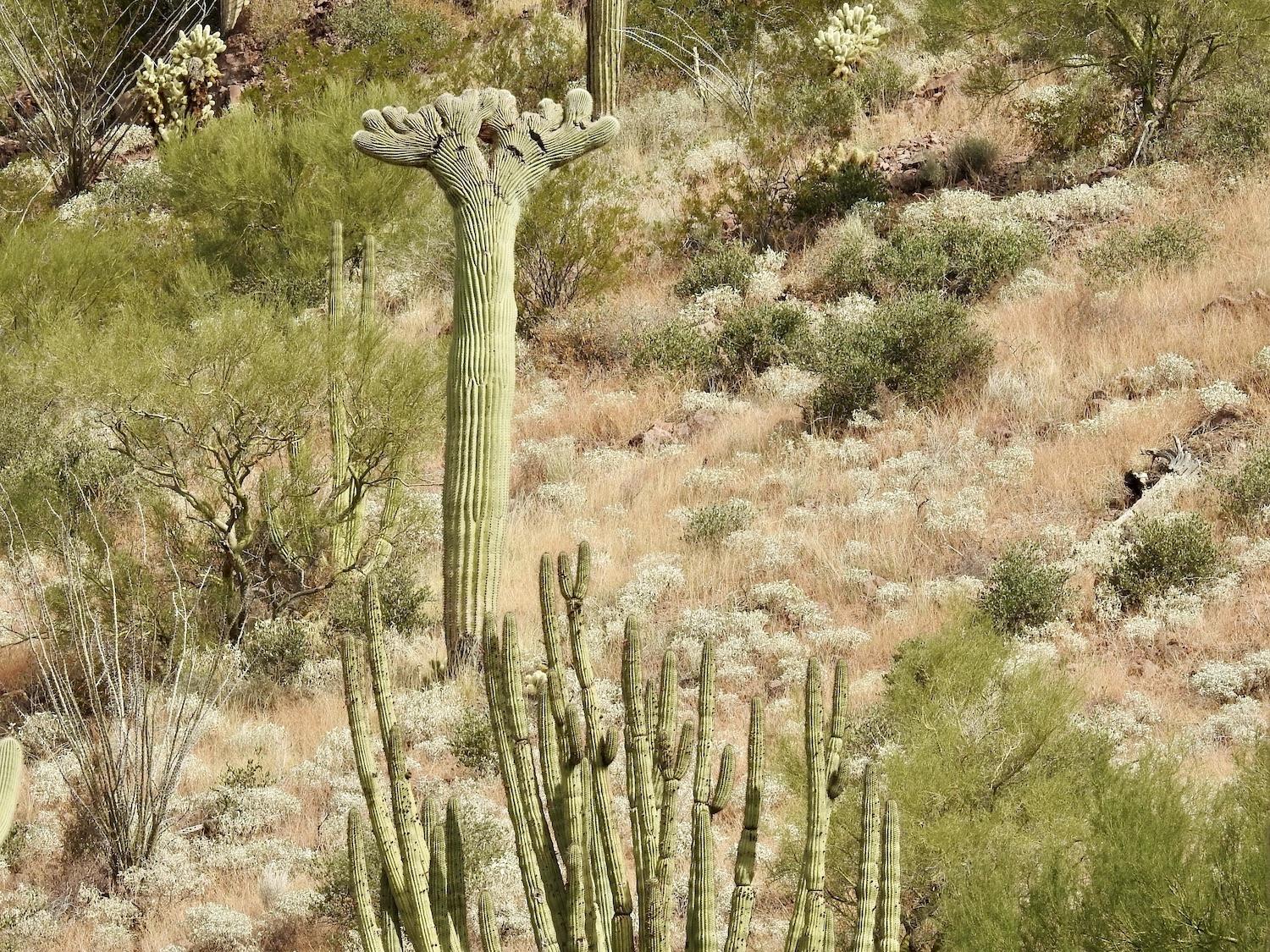
Nestled among the "normal" cacti along Ajo Mountain Drive is this oddball version of a saguaro known as a "cristate"/Jennifer Bain
Green Desert Explorations At Organ Pipe Cactus National Monument
By Jennifer Bain
Each cactus had more personality than the last as we road tripped through Organ Pipe Cactus National Monument in Arizona and admired all the organ pipes, saguaros and senitas. Some stoicly faced the Mexican border, where scores were ripped from the ground to build a border wall. Others lived a more serene life along the nature trail behind the Kris Eggle Visitor Center. Most existed without fanfare in the vast green desert. But it was a singular cactus with a striking deformity that stood out.
This one was just just off the Ajo Mountain Drive scenic loop, its anomaly caused when the cells in the growing stem divided outward instead of in the usual circular pattern and created a large, fan-shaped crest.
“Do you see how it’s kind of fanned out as opposed to being that perfect column?” asked Jessica Pope, Organ Pipe’s interpretation, education and community engagement division manager.
“It looks like a head of broccoli,” chimed in Ranger Cate Blanch.
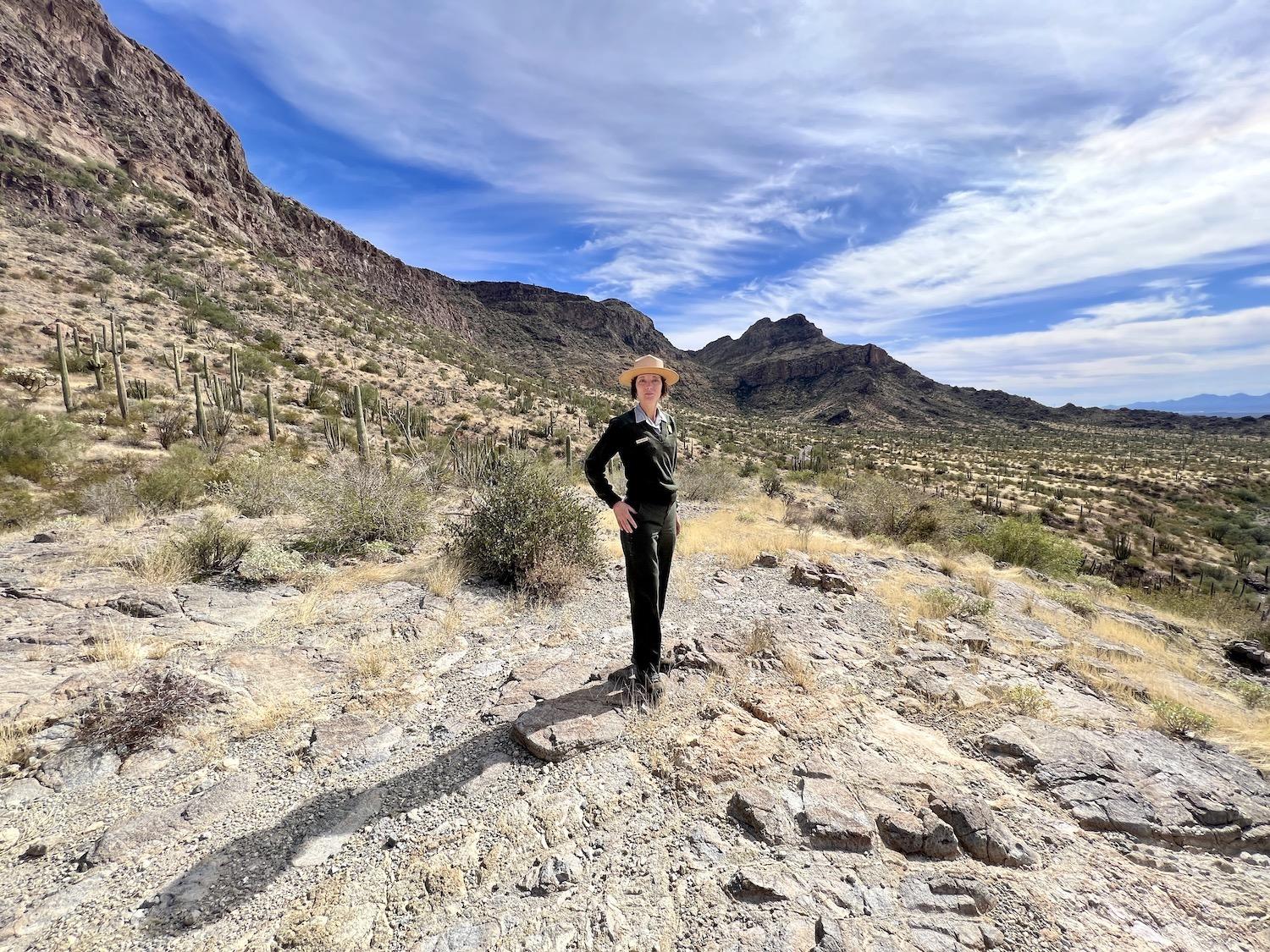
Organ Pipe Cactus National Monument Ranger Cate Blanch stands at a popular picnic spot along Ajo Mountain Drive in the "green desert" of southwestern Arizona/Jennifer Bain
As I zoomed in on the off-road cactus with my camera, we agreed that the Sonoran Desert feels a little otherworldly and these cristates (as they’re officially called) add to that vibe.
“It’s not good or bad for it all — it is a genetic mutation,” Blanch explained. “It’s estimated that about one in every 100,000 saguaros have the cristate. I’m not sure about the organ pipe. Those are generally the arms and there’s just a mutation where they all line up bunching together. It makes this very unique, very pretty, sort of arrangement.”
If only there had been time to find more. I picked up the park’s Desert Ranger Guide (for the “not-so-junior ranger”) and earmarked a two-page spread that listed the GPS coordinates and mile point numbers for 13 cristates, “wannabes” and arches along this popular driving loop.
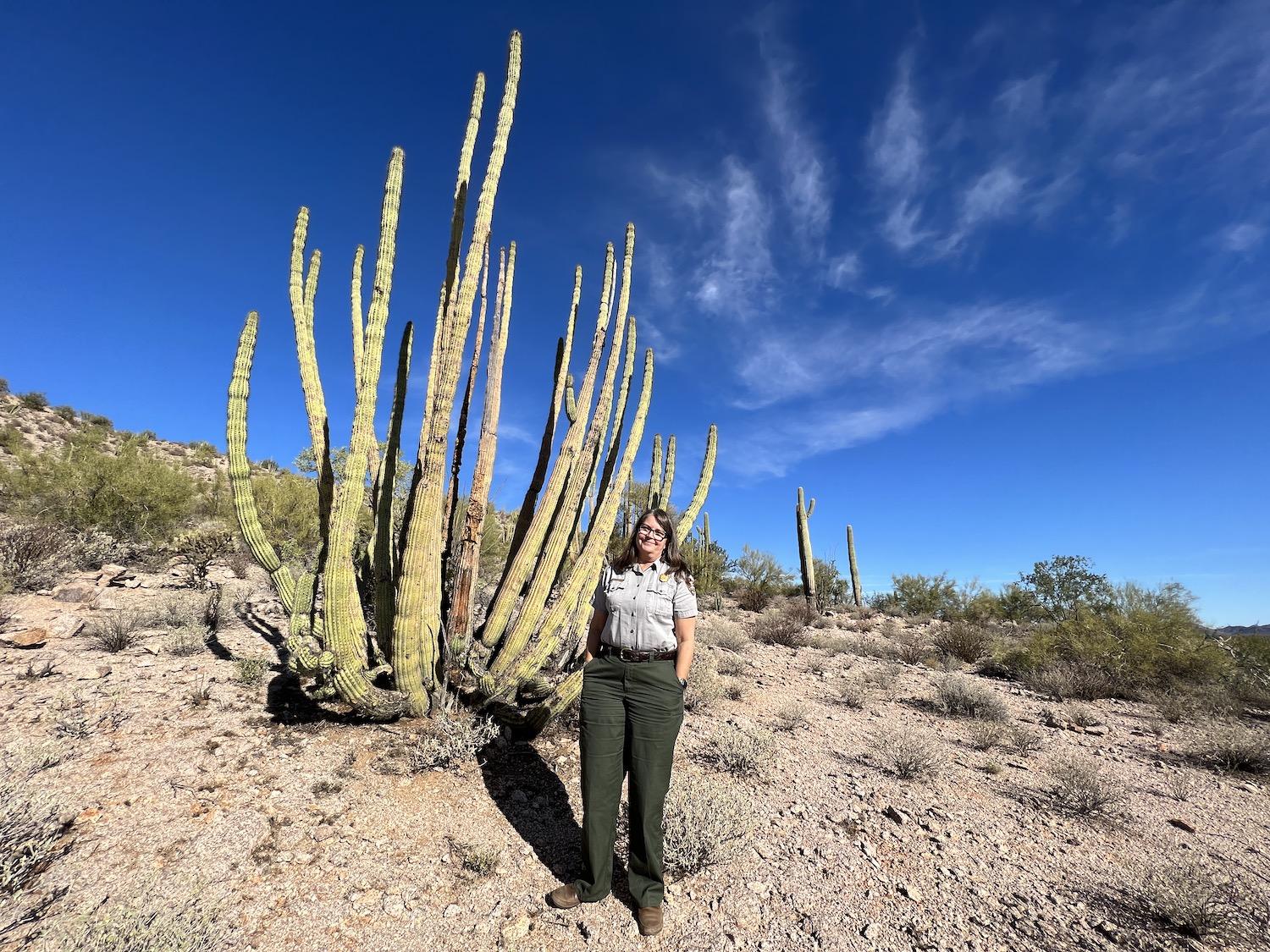
Organ Pipe Cactus National Monument's Jessica Pope stands in front of an organ pipe cactus along South Puerto Blanco Drive/Jennifer Bain
It was my first time in Arizona and, 10-year-old son in tow, I was drawn to the southwest corner of the state to see this borderlands park that draws just 190,000 visitors a year, most between November and April.
President Franklin D. Roosevelt created Organ Pipe Cactus National Monument on April 13, 1937, to preserve a representative area of the Sonoran Desert. It's now 516 square miles, or 330,689 square acres.
Using the artsy community of Ajo — a former copper mining hub — as a base, we had just two days to explore. On day one, we poked around on our own and did the visitor center and the first part of North Puerto Blanco Drive. On the second day, we hitched a ride with NPS staff to see South Puerto Blanco Road (and the lengthy border wall) all the way to Quitobaquito Pond, and then on to a portion of Ajo Mountain Drive.
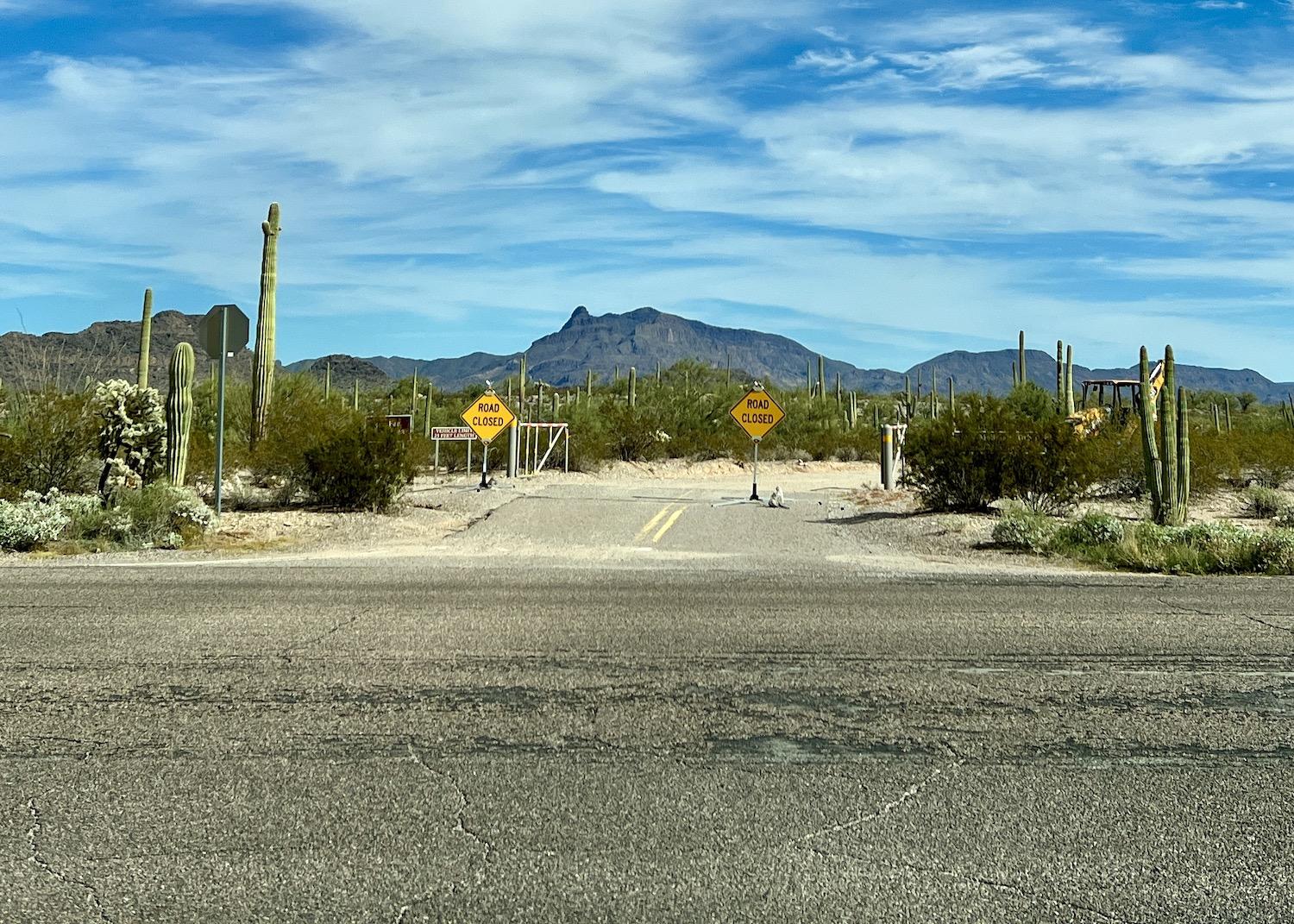
Ajo Mountain Drive, a popular driving loop, is closed until further notice for road improvements/Jennifer Bain
Ajo Mountain Drive — it must be noted — closed September 6 for road improvements and the work is expected to spill into 2023. The only reason I got to travel part way down the 21-mile, one-way loop was because Pope got special clearance to take a staff SUV as far as Arch Canyon on Veterans Day when nobody was out paving or putting in new culverts. Floodwaters tear up the dirt roads and can cause potholes deep enough to break wheels off cars. When the water’s running — usually in the summer monsoon season — vehicles can even get swept away.
Unlike North Puerto Blanco Drive, you don’t need a high-clearance vehicle to drive this scenic route. As we drove slowly down the empty road, we spotted Cactus Wrens, Phainopepla and “cactus hotels” full of bird nests.
We hopped out of the vehicle for a sombre moment looking at a water station maintained by Humane Borders (with a NPS special use permit) on routes traveled by migrants making perilous journeys on foot between Mexico and the United States.
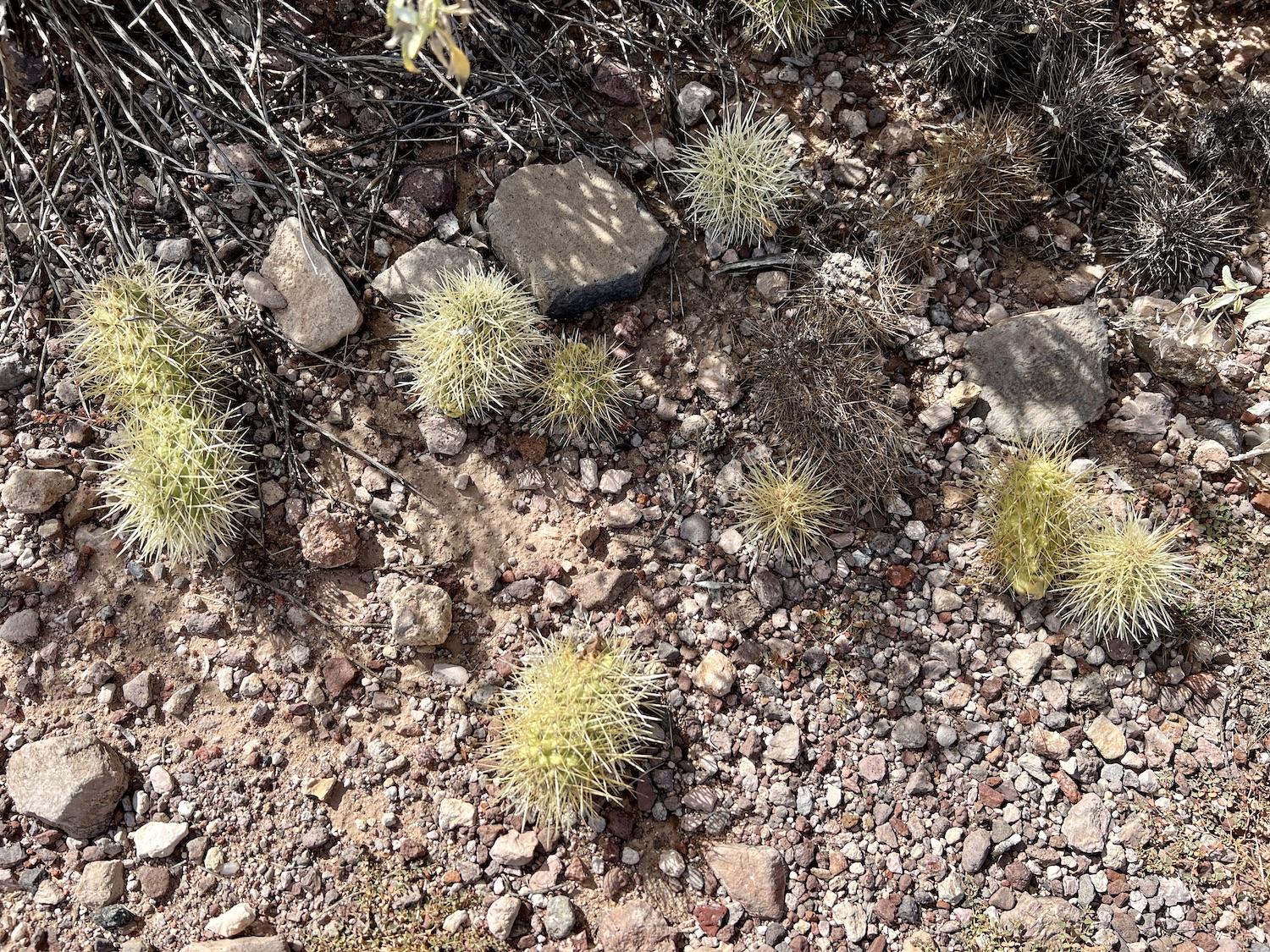
Avoid stepping on these cacti balls unless you want to "get cholla'ed"/Jennifer Bain
We studied teddy-bear and chain fruit chollas and heard what happens when the shrubby cacti pierce through your shoes.
“You know you’re a true resident of the desert when you get cholla’ed,” said Blanch with a laugh. “Then you get your story of when you had to remove the cholla from you, which everyone right now is sharing on Facebook.” Savvy visitors carry pliers or combs to remove the cacti spines. Others have to turn to park staff for help.
When we lavished praise on a small lizard — the kind that's everywhere in Arizona — that darted by us on the ground, Blanch was pleased.
“People generally go to national parks to see bison, deer or other big charismatic animals,” she said. “They tend to miss a lot of the smaller animals, and the life that we find in the desert tends to get a little underappreciated.”
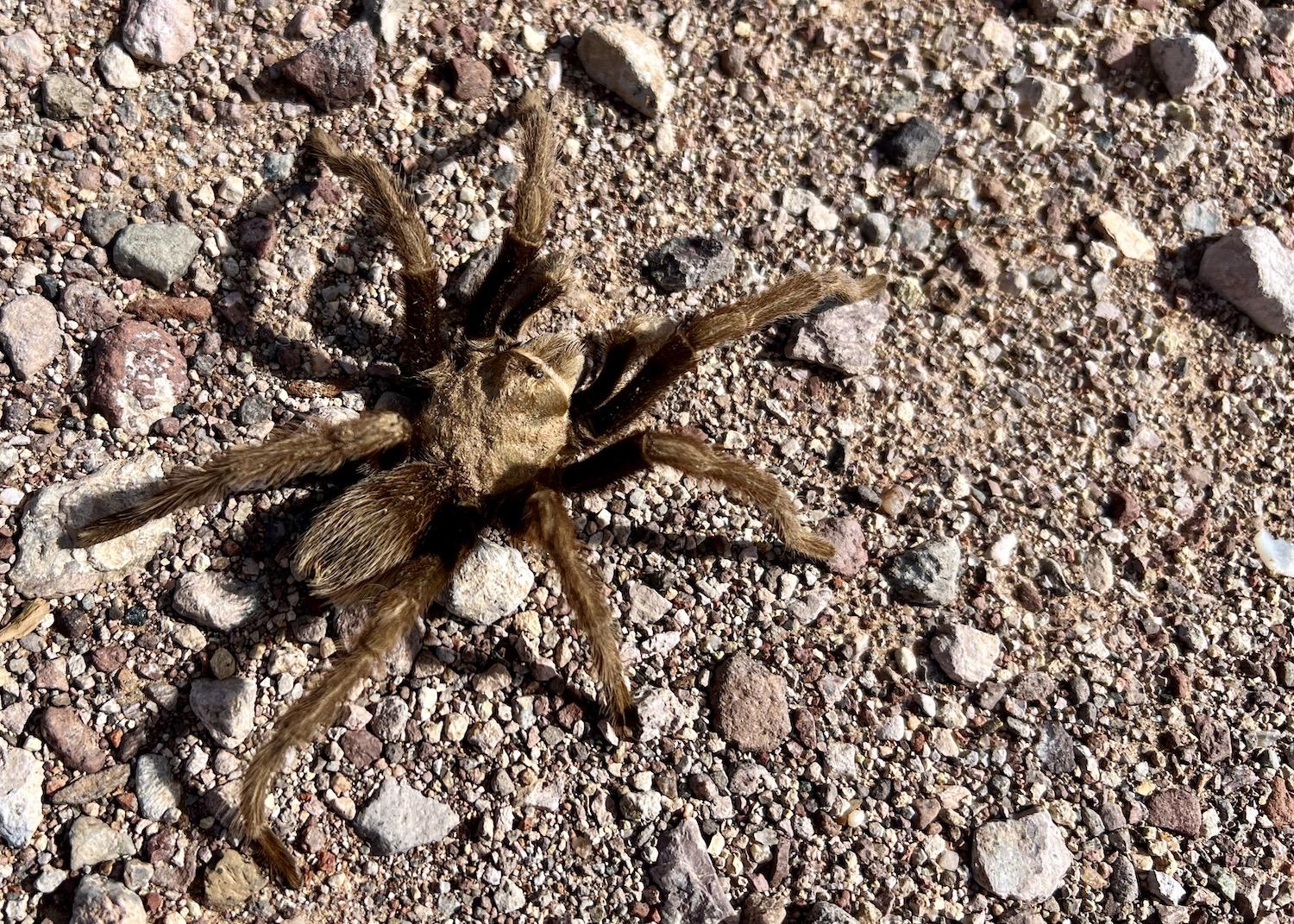
We kept a respectful distance when watching this tarantula cross the road on Ajo Mountain Drive/Jennifer Bain
We were only back in the Chevy Tahoe for a few seconds when Pope screeched to a halt as a hefty brown tarantula crossed the dirt road.
“He’s not sure if we’re friendly or foe,” said Blanch as we got out to admire the creature from a safe distance. “He’s looking for a lady to woo. Somewhere in a hole she’s hiding.”
When tarantulas feel threatened — usually by larger animals — they shake off utricating hairs in a tiny poof. If those wind up in your face, it causes an irritation. If you’re close enough for them to land in your eyes, you’ll probably need to see a doctor.
Consider us warned.
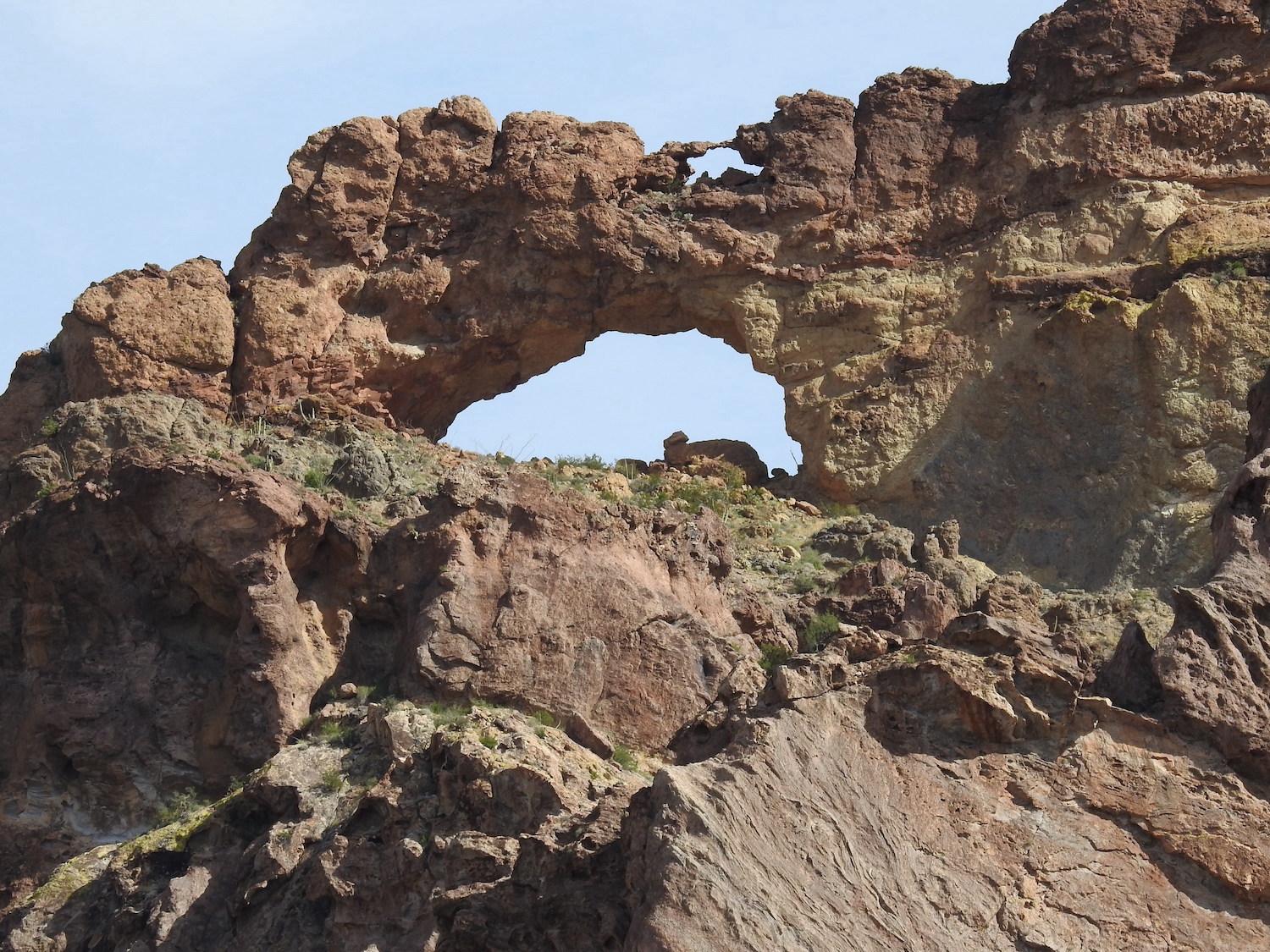
The famous double arch at Arch Canyon is visible from the trailhead parking lot/Jennifer Bain
We drove as far as the Arch Canyon trailhead before having to double back because the construction started just after that point. (We had special permission to drive the wrong way back on the one-way road.)
I had read that a rare, natural double arch carved into the jagged, reddish mountain was one of the most photographed spots in the park. But you have to take a short, official trail and then a steep and strenuous "social trail" (meaning it's not maintained) to get to the double arch. What I didn't know until I got there was that you can actually photograph the double arch from the parking lot. Through interpretive signs, I learned that the pinkish to chocolate-colored rock within the Ajo Mountain range is called rhyolite.
It was an ideal temperature to hike — something that would be too daunting here in the summer — but unfortunately we didn't have time.
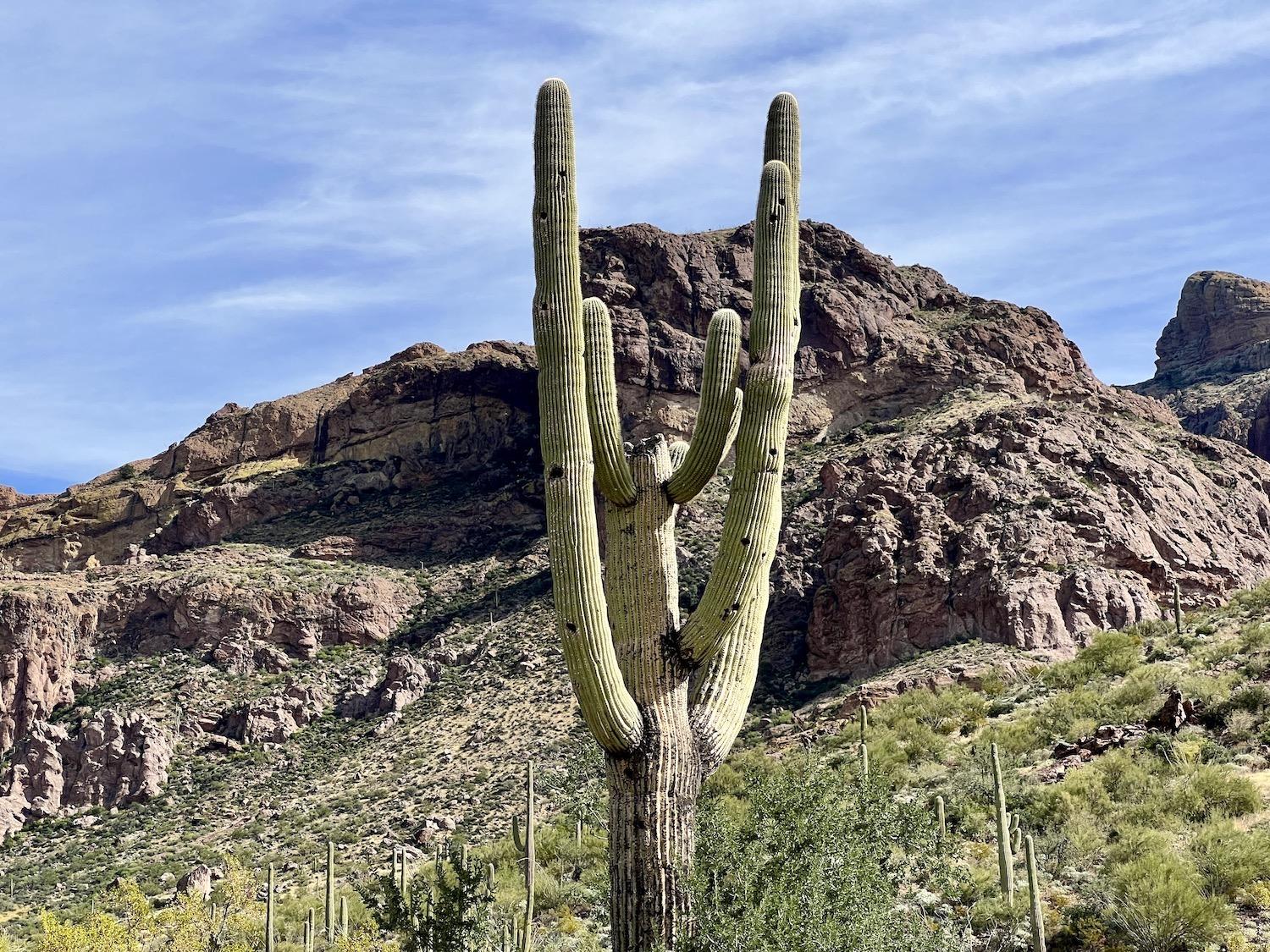
This was the most popular of the "cactus hotels" spotted in saguaro cacti along Ajo Mountain Drive/Jennifer Bain
No matter how rushed we were, though, there was always time for one more cactus photograph.
“Now that’s a cactus hotel,” said Pope, pointing out a wonderful saguaro along Ajo Mountain Drive.
“What makes him so popular?” I asked.
“It might just be the location,” Blanch replied. “He is close to a wash.”
“Well, I mean, look at the scenery,” added Pope.
“Can’t argue that, too,” Blanch agreed.
While You’re in the Area:
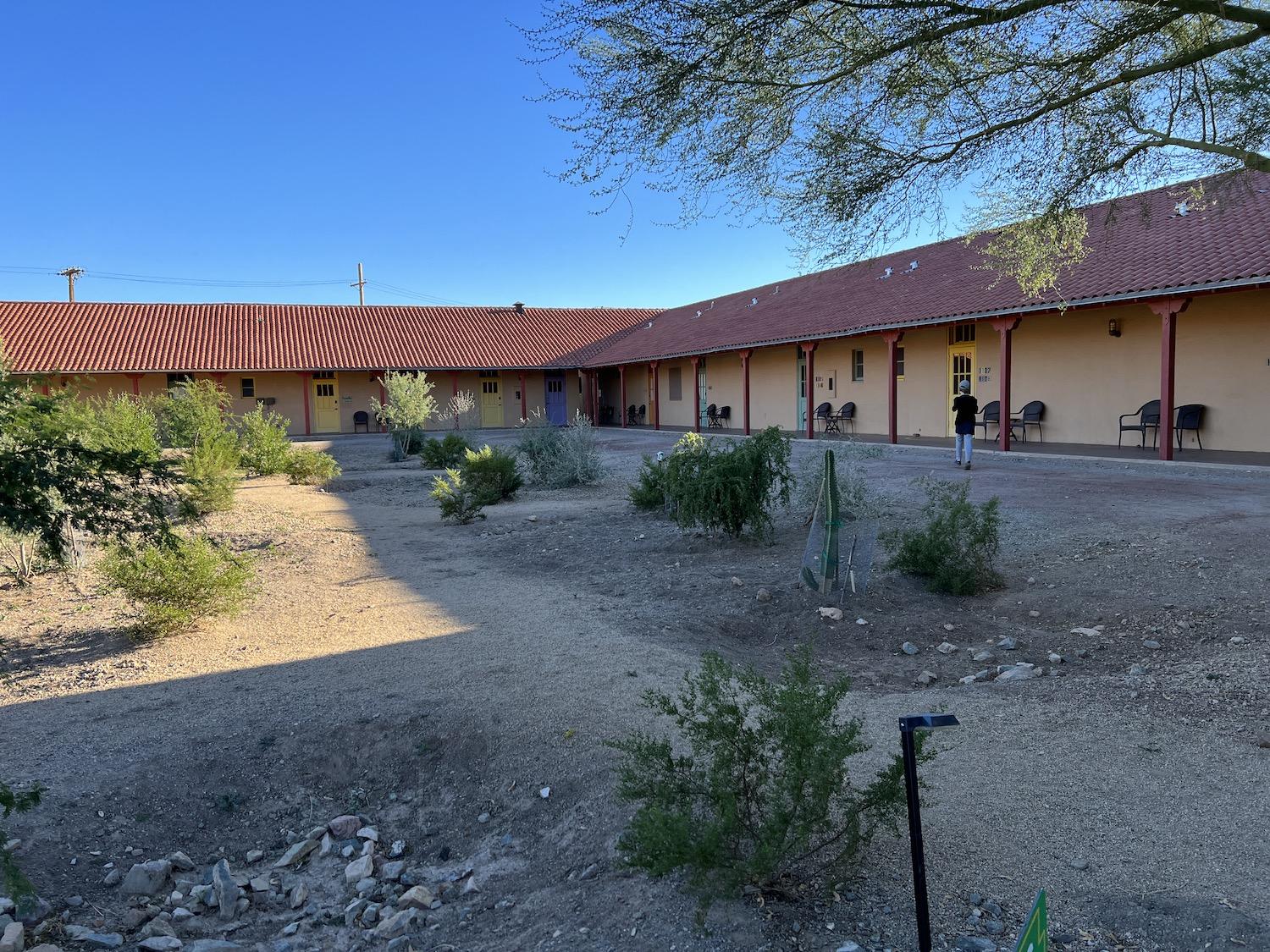
The Sonoran Desert Inn in Ajo is a great base for Organ Pipe Cactus National Monument explorations/Jennifer Bain
In Ajo, we loved the 22-room Sonoran Desert Inn and Conference Center — a 35-minute drive from the Organ Pipe Cactus visitor center. It's in a restored school and its courtyard features a series of themed plant groupings. Ajo Pie comes by the inn every Thursday to make and sell pizza, while Curley Coffee is just steps away. Don't miss the historic Ajo Plaza, Cabeza Prieta National Wildlife Refuge visitor center, Ajo Historical Society Museum or the New Cornelia Open Pit Mining Lookout and one-room visitor center. On the road to Organ Pipe Cactus, everybody stops to eat Mexican food at Granny's Kitchen in the unincorporated rural community of Why, and take a photo of the "Entering Why" sign.
Previous Traveler stories about Organ Pipe Cactus National Monument:
By The Numbers: Organ Pipe Cactus National Monument
Wilderness At Organ Pipe Cactus National Monument: A Challenge To Manage These Days
For First Time In 11 Years, All Of Organ Pipe Cactus National Monument Is Open To Visitors
Organ Pipe Cactus: A Sonoran Desert Treasure
Trump's Border Wall Threatens An Arizona Oasis With A Long, Diverse History
Op-Ed | Organ Pipe Cactus Will Suffer Irreversible Destruction


Add comment